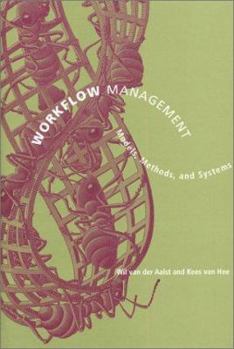Workflow Management : Models, Methods, and Systems
(Part of the Information Systems Series)
Select Format
Select Condition 
Book Overview
This book offers a comprehensive introduction to workflow management, the management of business processes with information technology. By defining, analyzing, and redesigning an organization's resources and operations, workflow management systems ensure that the right information reaches the right person or computer application at the right time. The book provides a basic overview of workflow terminology and organization, as well as detailed coverage of workflow modeling with Petri nets. Because Petri nets make definitions easier to understand for nonexperts, they facilitate communication between designers and users. The book includes a chapter of case studies, review exercises, and a glossary.
Format:Hardcover
Language:English
ISBN:0262011891
ISBN13:9780262011891
Release Date:January 2002
Publisher:MIT Press (MA)
Length:384 Pages
Weight:1.45 lbs.
Dimensions:1.0" x 6.3" x 9.2"
Customer Reviews
3 ratings
Excellent Book
Published by Thriftbooks.com User , 16 years ago
This is and excellent book. I was looking for a good book of workflows to use in my work and class like university professor. Out there there are many "empty" books. This one is rare one excellent book deep and simple and the same time. I strongly recommend it. Bye Martin
Workflows, explained simply and clearly!
Published by Thriftbooks.com User , 20 years ago
This is an excellent book containing principals, patterns and practices of workflow systems. The theory of workflow is covered with terms of Petri nets, the relevant concepts are clearly explained, and a lot of practical examples with thought provoking questions are included. I enjoyed reading/studying it. Workflow practitioners will find this book very useful both for practical and theoretical aspects. Finally a book that connects the practice of workflow with simple but complete theory!
Workflow design with a twist
Published by Thriftbooks.com User , 22 years ago
This book has significantly changed my thinking about and approach to workflow management. Prior to reading it I based workflow systems on process chains based on frameworks such as entry-task-validation-exit (ETVX) or plan-do-check-act (PDCA). While process chains are a valid approach, the only level of formality I imposed was cost and value analysis, which I realized after reading this book was not the entire picture of a workflow.What I learned is how to view workflow as a logical network using Perti Nets, which are both graphical and based on a formal language using Boolean logic (AND and OR joins and splits), programmatic views (iteration) and analytical logic (causality). More importantly, this approach has resolved a misalignment between the design of workflow systems with which I previously used procedures and events and the development approach used by my company's software engineers who were using object-oriented methods. Petri Nets are based on states instead of events, which more naturally aligns object-oriented development of workflow systems to the underlying design. Discovering this is what so significantly changed my thinking and approach to workflow.Although this book is heavily slanted towards Perti Nets, it also contains a wealth of material about workflow from business process and operations perspectives, and does not obviate process chain approaches. Instead, it provides you with a good grounding in the basics of workflow in general, and provides you with tools, techniques and an approach to developing workflows in a formal manner. If you are involved in process design, workflow development or business process engineering/reengineering this book is an invaluable, thought-provoking resource.





